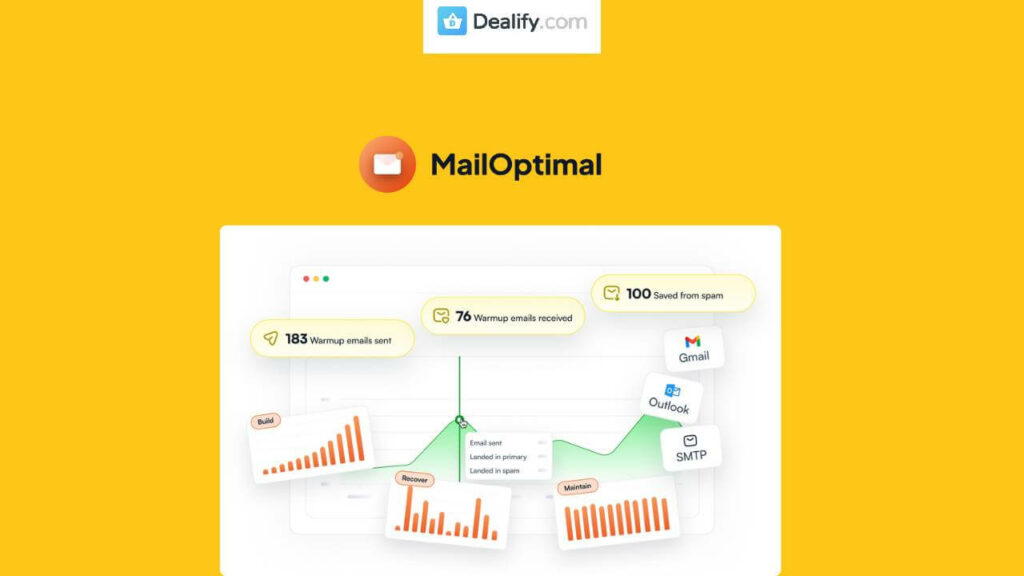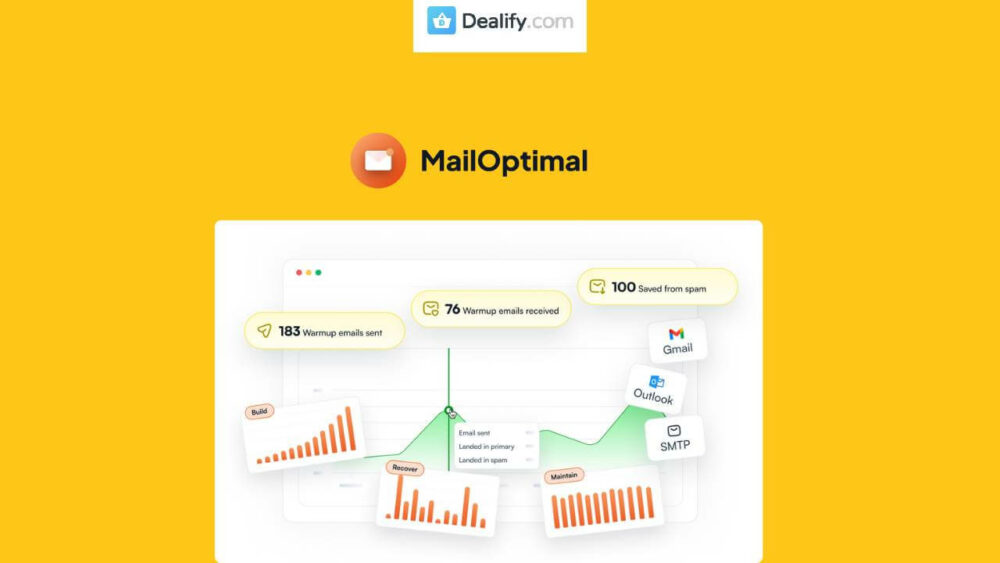The Importance of Email Deliverability in Today’s Digital Landscape
As a marketer and content creator, I understand how crucial it is to connect with an audience effectively. One of the most significant channels for engagement is undoubtedly email. Yet, one factor we often overlook in our email strategies is delivery—specifically, email deliverability. It’s not just about sending an email; it’s about ensuring it lands in the right place: the inbox. In this digital landscape, where every click counts, the importance of landing in inboxes rather than spam folders cannot be overstated.

Understanding the Significance of Landing in Inboxes
Imagine spending hours crafting the perfect email, only for it to vanish into the depths of a spam folder. That’s the nightmare scenario for anyone relying on email to reach customers or clients. Email deliverability refers to the ability of an email to reach the intended receiver’s inbox successfully. When an email lands in the inbox, it opens up a pathway for communication—one that can lead to engagement, conversions, and long-lasting relationships.
But what happens when emails aren’t delivered? Research shows that emails which fail to reach the inbox can adversely affect overall business performance. According to a report from Return Path, emails that land in the primary inbox have a 20% higher open rate compared to those that are filtered into spam. This statistic is backed by my own experiences. I’ve noted significant differences in engagement and conversion rates when the same audience was targeted through emails that consistently landed in the inbox compared to those few that ended up in spam. The inevitable conclusion? If you want to be seen, you need to be delivered!
Statistics Showing the Impact of Inbox Placement
Your email placement significantly impacts your performance metrics. For instance, a study by Campaign Monitor reports that emails with strong inbox placement see open rates of roughly 20%—sometimes higher, depending on the industry. Conversely, emails that end up in spam can see open rates dwindling to a disheartening 0% to 1%. This stark contrast shows the difference that good deliverability can make for your campaigns.
“Email deliverability is the cornerstone of successful email marketing. If your emails don’t reach the inbox, all your efforts go to waste.”
Moreover, conversions follow a similar pattern. According to a recent report by Mailchimp, emails that are placed in the inbox boast a click-through rate (CTR) of 3.6%, while those that languish in spam fall to only 0.6%. Consequently, optimizing for deliverability directly correlates with business success. And who doesn’t want to improve their open and conversion rates?
A Personal Anecdote on Email Deliverability
Reflecting on my own experiences, I remember a particular instance when I sent out an important announcement to my subscriber list. The email contained critical updates that my audience needed to see. I had written a compelling subject line and crafted the message meticulously. However, I didn’t pay attention to email authentication protocols. As a result, a significant number of my emails filtered into spam folders. The open rates plummeted, and I was left wondering what went wrong.
This experience was a wake-up call for me. I learned the hard way that email authentication—using SPF, DKIM, and DMARC—is essential. These protocols are safeguards that verify sender legitimacy. In turn, they minimize the risk that my emails will be flagged as spam. Implementing these authentication mechanisms not only improved my deliverability rate but also restored my confidence in email as a reliable communication tool. The lesson? Never underestimate the power of a well-structured email setup.
Keeping Track of Deliverability Metrics
Monitoring email deliverability metrics is another important step in improving inbox placement. Several tools can assist in tracking crucial data—such as open rates, bounce rates, and spam complaints. Services like MailOptimal offer robust email deliverability tests that help identify issues so that corrective measures can be taken before even hitting send. Investing in such tools is invaluable for anyone serious about their email outreach.
Furthermore, the use of inbox placement tests can provide insights into how emails are faring in real time. With a few clicks, these tools can simulate inbox placements across all major email providers like Gmail and Outlook. Having such data empowers me to tweak my email strategies based on actual performance trends. Don’t let your emails go unseen; analyze the deliverability data for actionable insights.
Common Deliverability Challenges and Solutions
Despite best efforts, many marketers encounter common hurdles that impede email deliverability. Some issues arise from technical setups, while others stem from poor sender reputation. Regularly checking your sender domain and IP against blacklists is crucial to ensure your reputation remains intact. Neglecting to manage your sender reputation can have lasting impacts on deliverability and engagement rates.
From my experience, simply monitoring the sender reputation isn’t enough. Consider segmenting your email lists to ensure that you’re sending relevant content to the right people. Tailored emails tend to garner higher engagement and, consequently, improved deliverability. Emails that consistently receive engagement signals, such as opens and clicks, are viewed more favorably by email service providers. The science is simple: Good reputation = Higher deliverability.
Email Deliverability: A Long-Term Commitment
Email deliverability isn’t just a one-time fix but a continuous commitment. Regularly refining your strategies, monitoring your metrics, and staying updated with best practices makes a world of difference. By prioritizing deliverability, we’re not just ensuring that our emails reach the inbox; we are maximizing every opportunity to foster connections and grow our businesses.
In today’s fast-paced digital landscape, ignoring email deliverability can lead to lost opportunities. As professionals, we must regard it as crucial to our outreach strategies. No one can afford to let their hard work disappear into the abyss of the spam folder—not when a thriving community of engaged recipients lies on the other side of the inbox.
How to use MailOptimal to warm up your email
If you’re diving into the world of email marketing or outreach, there’s a good chance you’ve encountered challenges with getting your emails into recipients’ inboxes rather than the dreaded spam folder. It’s a frustrating situation many of us face. That’s where MailOptimal comes in—a comprehensive solution to optimize your email deliverability. In this guide, I’ll walk you through how to effectively use MailOptimal to warm up your email.
Basic Warmup Settings
When initiating a warmup process with MailOptimal, the first step involves configuring the basic warmup settings. Let’s unpack what this entails.
First and foremost, you want to define your objectives. Are you aiming for higher open rates or simply trying to ensure your emails are seen? MailOptimal allows me to customize these settings based on my goals. For instance, I can specify the number of emails sent per day and choose between warming up multiple accounts or focusing on a single account. This customization is essential to tailor my warmup strategy according to my specific needs.
The system also offers an intuitive interface that simplifies the setup process. I found it easy to navigate as I set parameters like the sending frequency and the volume of warmup emails. Being proactive in setting the right foundation for the warmup can significantly influence the effectiveness of my email campaigns.
Warmup Mode Selection
Next, let’s discuss the warmup mode selection—this feature empowers me to engage in a tailored approach to email warmup. MailOptimal offers various modes suited for different purposes. There’s a mode for gradual warmup that’s ideal if I’m starting with a new email address. This means gradually increasing the volume of emails sent daily, which builds my sender reputation safely over time.
There are even advanced modes available for established email addresses, allowing for more aggressive warmups. By selecting the right mode, I can align my warmup strategy with the needs of my email campaigns, ensuring I maintain a high deliverability rate.
As an example, during my last campaign, I opted for the gradual mode for a new account. I was amazed at how seamlessly my emails made it into inboxes rather than getting filtered as spam. This flexibility is a game-changer in achieving my email outreach goals.
Spam Correction
One of my favorite features of MailOptimal is the spam correction capabilities. With deliverability being my top concern, identifying potential spam-related issues early on is crucial. MailOptimal conducts checks that reveal possible pitfalls that could cause my emails to end up in spam folders.
For instance, the platform helps me identify problematic content or configurations, such as the presence of unsubscribe links or disabled DKIM settings. Not only does it notify me of these issues, but it also provides actionable insights on how to correct them before high-stakes campaigns take off.
I recall an instance where my emails were flagged as promotional due to overly aggressive language. With MailOptimal’s intervention, I was able to amend my approach and boost my engagement metrics significantly. This capability saves time and ensures my messages reach their intended audience without unnecessary blocks.
Deliverability Test
The final leg of my warmup journey with MailOptimal involves conducting deliverability tests. After all, what’s the point of a warmup if I can’t ascertain its effectiveness?
MailOptimal’s deliverability tests analyze how my emails perform across various email service providers (ESPs). The results provide me with valuable data—where my emails land, be it the inbox, promotions tab, or spam folder. This information equips me with insights to adjust my content or sending patterns accordingly.
One of the most comprehensive tests I ran recently included a real-time analysis across major ESPs. I could see that my deliverability score varied significantly depending on the content and structure of my emails. With this information, I took the necessary steps to redevelop my email strategy, leading to enhanced performance in subsequent campaigns.
During this process, I was intrigued to discover that running consistent deliverability tests helped me maintain a good sender score over time. The impact of being proactive in this area cannot be overstated; it’s a key factor in sustained email success.
Conclusion
In wrapping this up, using MailOptimal to warm up my email has been a fruitful endeavor. The setup process, warmup mode flexibility, spam correction, and thorough deliverability tests provide a strategic advantage in navigating the complexities of email marketing. With MailOptimal, I’m not just sending emails—I’m ensuring they reach their destination. I encourage anyone seeking to optimize their email outreach to consider these steps.
“The key to email marketing success lies in reachability and engagement. With tools like MailOptimal, I’m confident my messages are seen.” – A satisfied MailOptimal user
As with any strategy, continual monitoring and adjusting are crucial. While MailOptimal simplifies the process, being engaged and adaptive allows me to maximize the benefits of the warm-up process. By leveraging this tool effectively, I’m laying down a solid pathway toward enduring success in my email communications.
TL;DR: Use MailOptimal to effectively warm up your email accounts by adjusting basic settings, choosing suitable warmup modes, correcting spam issues, and conducting deliverability tests. This ensures your emails reach inboxes and enhances overall engagement.

